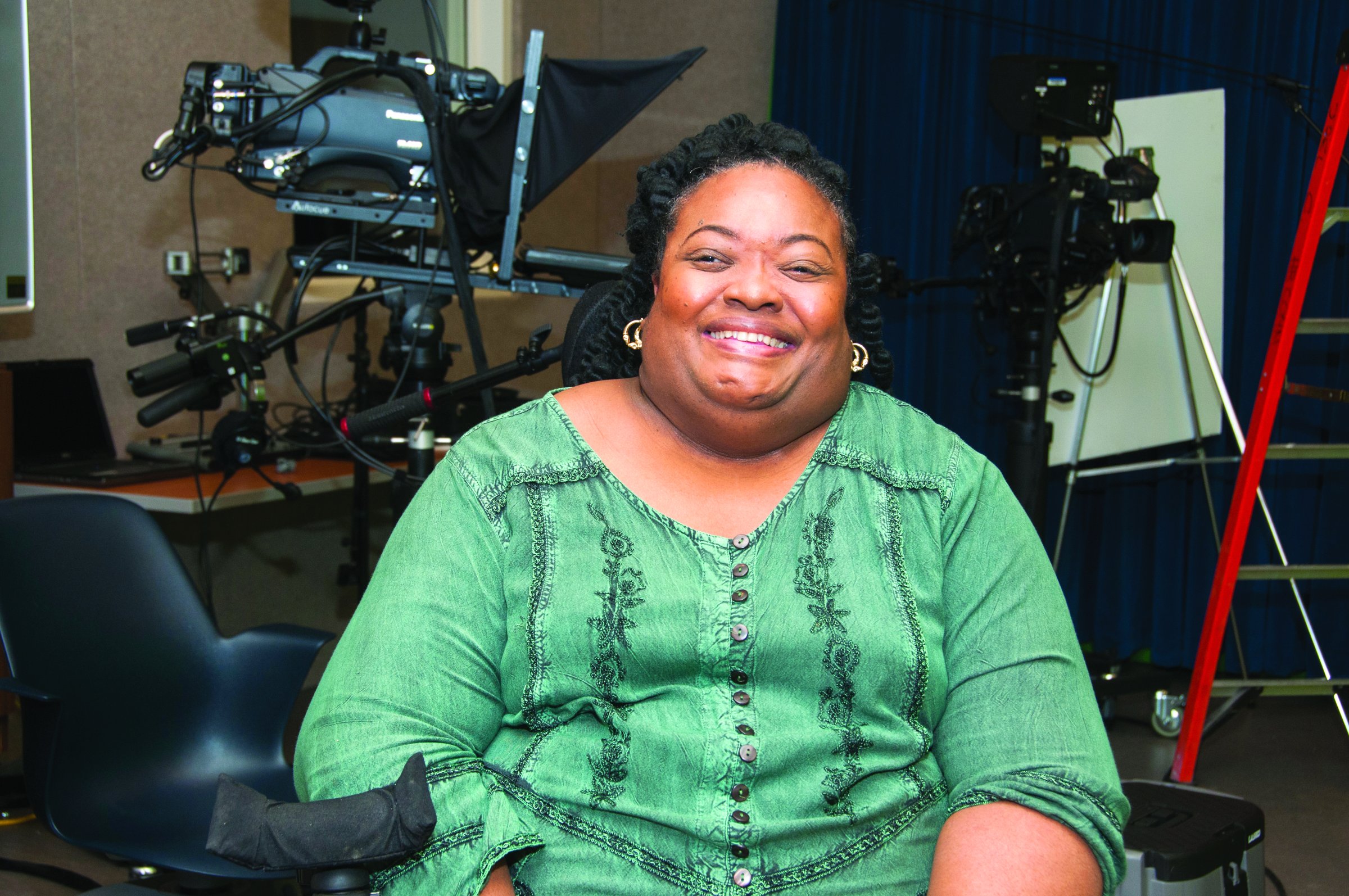
Emery is a filmmaker and writer. Her latest documentary is Black Women in Medicine
Does anyone question whether J.K. Rowling actually wrote Harry Potter? Who thinks Clint Eastwood didn’t actually direct Million Dollar Baby? What about The West Wing—did Aaron Sorkin really write that hit series? In the entertainment world, if you can act, dance and sing, you are considered a triple-threat. In the rest of the world, if you are disabled, black and female, you are triple-threatened.
When I enter a room in my mechanized wheelchair, I never know what its occupants will see first: my disability, my blackness or my gender—it is rare that others see beyond the “-ism vortex” and first recognize my talents.
In today’s political climate, the keyword is “diversity.” Every marginalized group is fighting for better representation and a place within a candidate’s social-justice agenda. As a person living at the intersection of three marginalized identities, I often wonder where I fall in the political agenda of big decision makers.
As a woman with a disability, I’m still considered invisible. As a black woman with a disability, despite a long and successful career in the creative arts, I’m not even considered.
Contrary to the world’s perception, most folks who know me call me a force of nature. I’ve built a creative business identity separate from the body armor people encounter upon first meeting me, but even when I could walk, I never allowed other’s perceptions to define my capabilities or sense of self.
I wasn’t always in a wheelchair. And when I wasn’t in a wheelchair, I knew what racism and sexism looked like, but they didn’t deter me from following my calling as an artist. I understand now that I am very uniquely different—and not just because the world sees me fitting nicely into three “diverse” categories in direct opposition to the cultural norm. I am different because I see myself as more than a clump of labels.
Kimberle Crenshaw, a civil-rights advocate and law professor known for her work on critical race theory and the development of intersectional theory, has described a legal framework that defines black women as a crash. Our existence at the intersection of two marginalized identities—being both female and African American—may lead the world to view us as still less than one, our identities the sum of two societal “negatives” in conflict with the dominant cultural norms. As an African American female with a disability, a wheelchair-riding quadriplegic, I exist as a triple threat to our society’s normative conceptions (white, male, able-bodied).
While this limited system views me as less than—if it views me at all—I view myself as a much more complicated and culturally rich human as the result of my body armor. My gender, race and disability all contribute to the ways in which I obtain and maintain power—not through my intersectional identity, but through my search to become human in ways not easily codified. In spite of my reimagined relationship with these identity markers, the world has a lot to catch up on.
The work that I produce affects policies and belief systems, and encourages others to allow their light to shine. And yet, I am always challenged about the authorship of my work. “Did someone else make the film for you?” “Did someone else write the article?” “Did someone else write the novel?” The physical picture of me does not match the preconceived notion of what someone who looks like me is capable of producing.
When stereotypes and societal shortcomings manifest in these questions, I am left once again wondering if the inquiry stems from the fact I am black, the fact I am female or the fact I am in a wheelchair. As a multidimensional human being, I am required to explain the way each of those positions impacts my work in order to ensure a level of respect and understanding reserved for those with less complex identity markers—bodies that don’t require explanation.
And so I am often left with a new question in response to their inquiries: how can I make sure the world sees the essence of my spirit? How do we change the limited view of the binoculars into a beautiful kaleidoscope of humanity?
More Must-Reads from TIME
- Why Trump’s Message Worked on Latino Men
- What Trump’s Win Could Mean for Housing
- The 100 Must-Read Books of 2024
- Sleep Doctors Share the 1 Tip That’s Changed Their Lives
- Column: Let’s Bring Back Romance
- What It’s Like to Have Long COVID As a Kid
- FX’s Say Nothing Is the Must-Watch Political Thriller of 2024
- Merle Bombardieri Is Helping People Make the Baby Decision
Contact us at letters@time.com